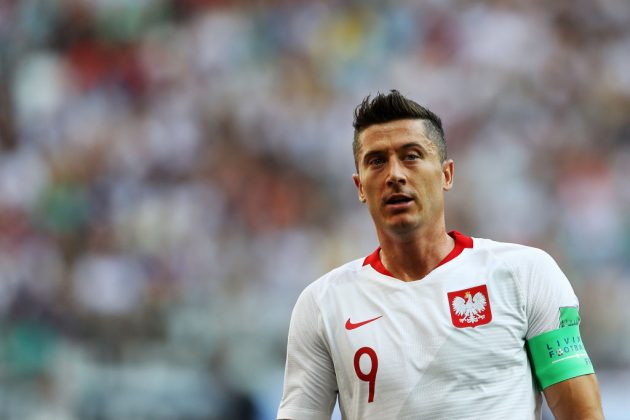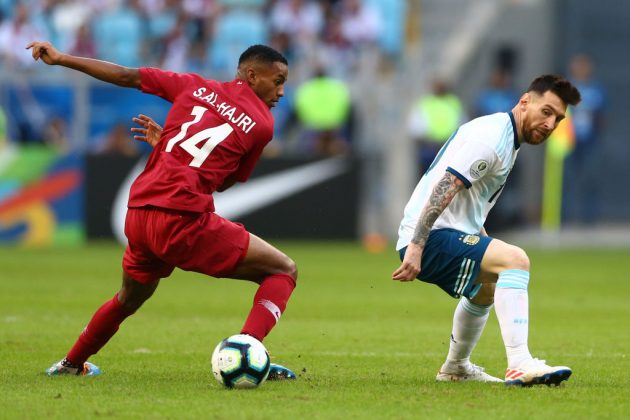The most complex World Cup qualifying process yet? England’s path, the role of Qatar, the Nations League and Russia in the race for Europe’s 13 spots

When Bill Shankly quipped that “football is a simple game complicated by people who should know better” he could have been talking about the Qatar 2022 World Cup qualifiers.
This week, England and the other 54 European national teams kick off their campaigns to reach next year’s tournament with a triple-header of matches.
And the only thing more baffling than the decision to stage the World Cup in a tiny Gulf state roughly the size of Yorkshire is the qualifying format.
How will the hopefuls be whittled down to 13 qualifying European teams? What has the Nations League (yes, that again) got to do with it? And why is Qatar’s national team involved? Read on.
How will Europe’s qualifiers be decided?
The 55 European entrants have been divided into 10 groups; five groups of five teams and another five groups of six.
Ten group winners are guaranteed a place at Qatar 2022, plus a further three teams. And here is where it gets mind-bendingly complicated.
The three extra places are determined by a labyrinthine process involving the 10 group runners-up plus the two best Nations League group winners not already accounted for.
Those 12 teams go into three four-team play-offs, consisting of semi-finals and a final, to determine the final three European qualifiers.
What would Shankly have made of that? It’s probably not printable.
Who is in England’s group?
England are in Group I, one of the six-team groups, where their main competition looks to be Poland.
Gareth Southgate’s 2018 semi-finalists will also play home and away against Hungary, Albania, Andorra and San Marino.
Poland’s presence may cause nerves in England fans of a certain vintage, given they denied Sir Alf Ramsey’s side a place at the 1974 World Cup.
But that was almost half a century ago, and England have lost just one major tournament qualifying fixture since 2009.

Southgate’s men begin their Group I campaign at home to San Marino on Thursday.
They then visit Albania on Sunday before another Wembley game, against Poland, next Wednesday.
Is there a Group of Death?
Every group-orientated sporting competition must have a Group of Death – it’s the rules.
For the 2022 World Cup qualifiers, the outstanding candidate is Group G, which includes Holland, Turkey and Norway.
Group F – featuring Denmark, Austria and Scotland – deserves a mention too, but doesn’t have the same big-name casualty potential.
Why are Qatar in with Europe’s teams?
Wait, is that Qatar in Group A along with Portugal, Serbia, Republic of Ireland, Luxembourg and Azerbaijan?
Yes and no. In a move designed to give next year’s hosts much-needed experience against seasoned opposition, Qatar will act as the group’s sixth team.
Their results will not count towards the group’s standings, however. The matches are merely for practice, given the team naturally already has a place at the Qatar 2022 World Cup.
This isn’t the first time Qatar have been parachuted into an unfamiliar competition.
They also played (dismally) in the 2019 Copa America and will be part of this summer’s Gold Cup, normally reserved for North American, Central American and Caribbean nations
Aren’t Russia banned?
Russia are taking part in the 2022 World Cup qualifiers, even though – strictly speaking – the country is banned from all major sporting events until the end of next year.
In reality, the Russian national team will be able to play in Qatar, with certain restrictions.
They will not be able to use their flag or anthem, and the word ‘Russia’ can only be present on kits if ‘neutral team’ or ‘neutral athlete’ have equal prominence.

Russia’s ban is for breaking anti-doping rules by manipulating lab data and was cut from four years to two on appeal at the Court of Arbitration for Sport three months ago.
They have been drawn in Group H, which also contains 2018 finalists Croatia, Slovakia, Slovenia, Cyprus and Malta.
The other 2022 World Cup qualifiers
Europe may only just be starting their 2022 World Cup qualifiers, but elsewhere the process is well under way.
Africa and Asia are onto the second stage of qualifying, while South American teams are four games deep.
North America, Central America and the Caribbean are about to start. In Oceania, meanwhile, the process has been beset by Covid-19 delays and won’t begin until next year.
What happens next?
The European group stage is being crammed into four bumper rounds of international fixtures finishing in November.
The play-offs for the final three European places are scheduled for March 2022, a month before England (hopefully) find out their World Cup opponents in the draw for the tournament finals.
Qatar 2022 is to be the last 32-team World Cup; the 2026 tournament in the USA, Canada and Mexico will expand to 48 nations.
So by the time we have finally got the grips with this qualification process, there will be a new set of barely decipherable permutations to consider. Well done everyone.
